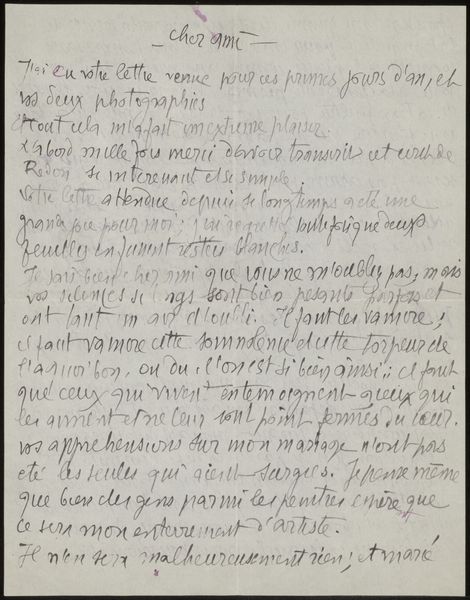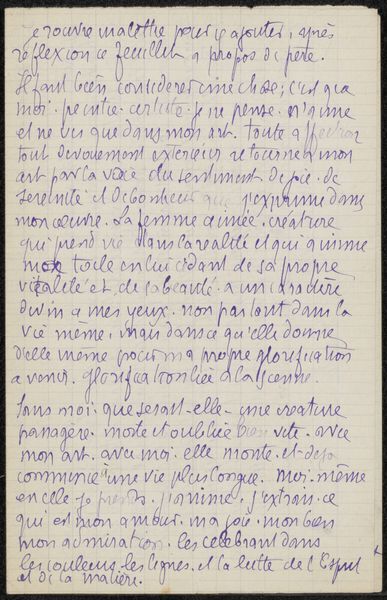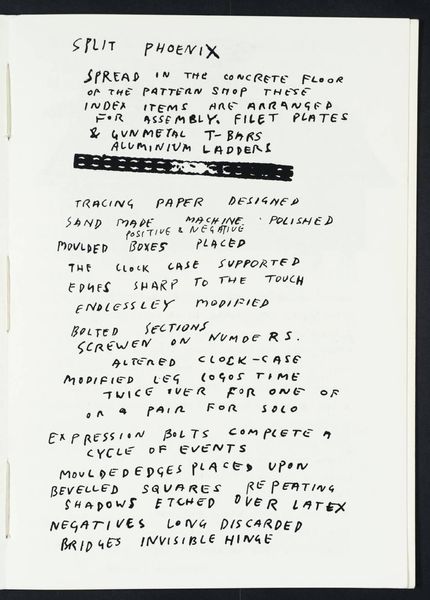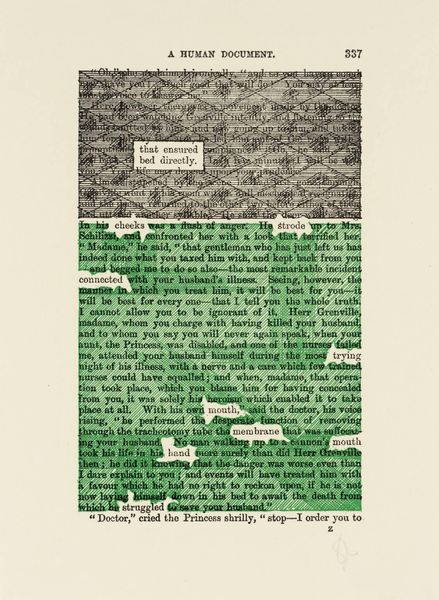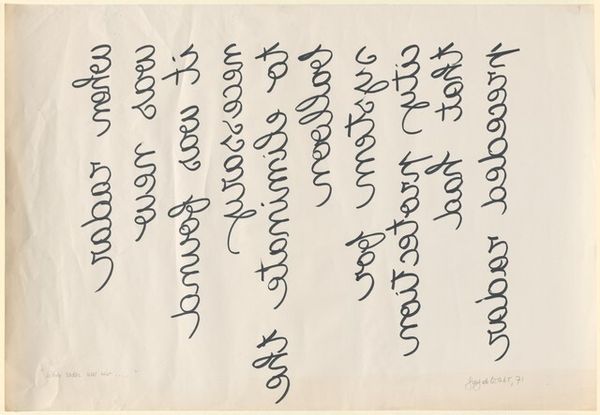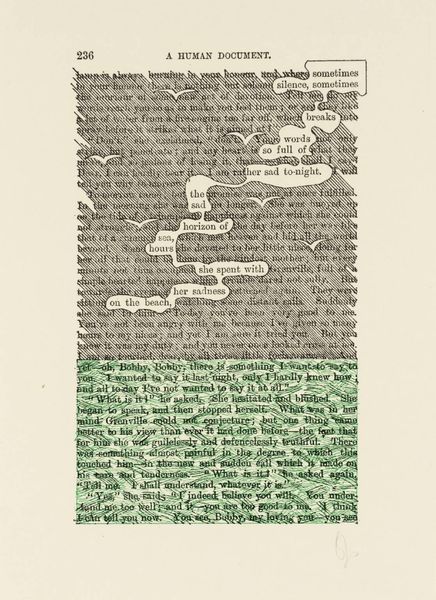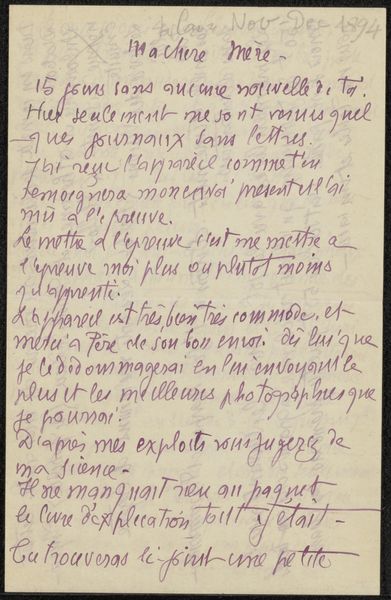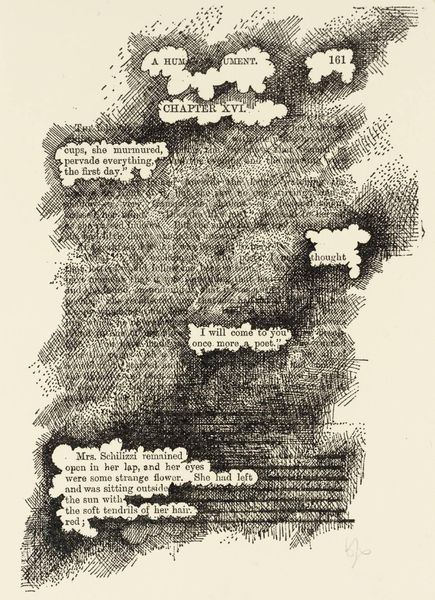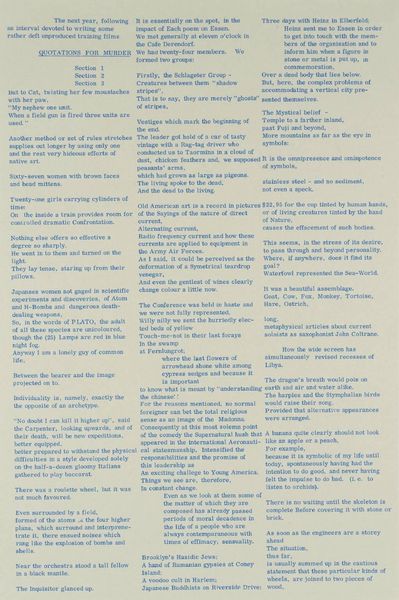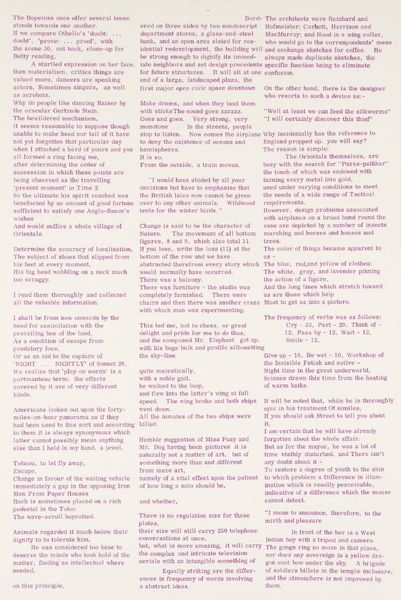
Dimensions: image: 297 x 211 mm support: 297 x 211 mm frame: 365 x 278 x 38 mm
Copyright: © David Shrigley | CC-BY-NC-ND 4.0 DEED, Photo: Tate
Curator: I find this "Untitled" drawing by David Shrigley so compelling. The Tate holds it in their collection, and it's essentially a handwritten, repeated phrase on lined paper. Editor: It feels like a mantra gone slightly wrong, doesn't it? The repetition of "Santa Claus is not evil. There is no need to defend myself against him"… it's darkly humorous but also a bit unsettling. Curator: Exactly! Shrigley’s work often plays with the absurd and the mundane. Here, the childlike handwriting and the absurd statement create a tension. Is it paranoia? A genuine belief? Editor: Perhaps it reflects a broader anxiety about authority figures, even the seemingly benevolent ones we encounter in childhood. It makes you consider how cultural narratives are formed and questioned. Curator: I agree. And it's interesting how the simplicity of the piece—the paper, the pen, the repetition—amplifies the impact of the message. It's almost like a school punishment, writing lines over and over. Editor: It’s stuck in my head now… I think I’ll be side-eyeing Santa a bit more this year.
Comments
Join the conversation
Join millions of artists and users on Artera today and experience the ultimate creative platform.
tate 3 months ago
⋮
This Untitled work is composed of text, written by hand in capital letters on a piece of A4 lined paper torn from a pad. The text comprises two sentences written over two lines and repeated seventeen times so that it fills the page. It reads: ‘Santa Claus is not evil. There is no need to defend myself against him’. The repetition of the lines has a double character. It recalls the old fashioned practice of punishing school children by setting them the task of ‘doing lines’ – writing the same line of text over and over again a large number of times to drive its message home in the unfortunate pupil’s head. The ruled lines on the page – characteristic of school books – emphasise this. But instead of affirming that the author should not do something viewed by school teachers as transgressive and anti-social (as ‘lines’ normally do), Shrigley’s text would appear to testify to a neurosis. Evoking a fictional personality (the author) so troubled by his fear of a parental fantasy figure (Santa Claus) that he has to write lines to counter his delusion with reassurance, it suggests a mantra chanted with the purpose of self-healing. Whether the lines are a punishment by a fictional second party or a private personal ritual is entirely ambiguous. Either possible scenario combines comedy with pathos. The effect of a neurosis is heightened when it becomes apparent (it is not noticeable at a first glance) that the artist ruled pencil lines over the lines printed on the paper.

